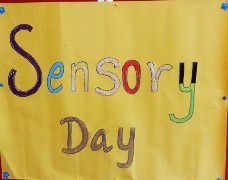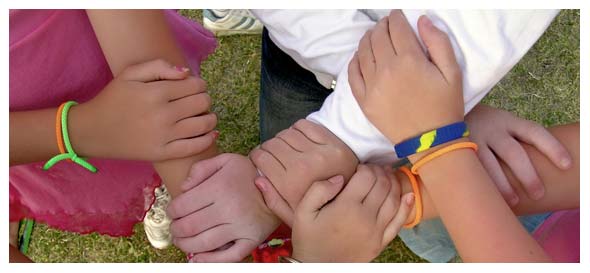
The five basic human senses – touch,sight,smell,taste,hearing and the sense organs associated with each sense send information to the brain to help us understand and perceive the world around us.Sensory processing is the process that organizes sensation from one’s own body and the environment making it possible to use the body in the environment effectively.
Children’s ability to regulate sensation – the process of noticing,organizing and integrating information from their body and their environment and then processing and responding appropriately greatly contributes to self regulation.
Difficulty regulating sensory information such as touch,smell,taste,sound,body movement or body position can lead to patterns of hyper-sensitivity to sensory stimuli or sensory avoidance;experiencing sensory overload,sensory aversion,sensory seeking behaviors etc. Each child’s sensory processing is different and the symptoms of having sensory processing issues may depend on the way a child processes different sensations.Certain children experience sensory overload and avoid touch,smell ,sounds etc whereas certain children seek touch,smell ,sound etc.Hence at our center, a sensory box having materials of different textures is maintained in each class and children get to play with it during breaks or when they seek sensory stimuli. Sensory play time is also a part of the routine at Ekadaksha where children get opportunities to explore different materials to touch,get exposed to different sounds and also explore different visual sensory stimuli. Sensory integration is an important aspect to consider in order to teach the child how to regulate their senses and bodies.
”Sensory day” was organised by Ms.Mercy, Special Educator, ELC to expose children to different textures and materials. The children explored these materials. They chose things they are comfortable to touch and play with it.
One area was allotted for “Sensory walk” where different materials and textures were arranged on the floor – stones,sand paper,Hay,bottle caps,pom pom balls,bubble wrap. The children experienced the sensory walk, feeling the touch of different textures through their feet.
Another area was allotted for “Sensory trays” where different materials were arranged in individual trays – stones,sand,rice,pom pom balls,clay,goop. The children experienced touching these with their hands.
Some children disliked certain things while others enjoyed it. For example,some avoided touching the goop which is sticky, whereas some children loved to touch and play with it.Few wanted the feel of the rough surface and enjoyed standing over bottle caps,sand paper while some children avoided the feel of rough textures. However each child found their own favourite and played around with it.
By organising the “Sensory day” the teachers learnt about the likes and dislikes of children. They also understood the seeking and avoiding of different sensory stimuli. This understanding helps for planning activities in the class, sensory breaks as well as calming the child.








